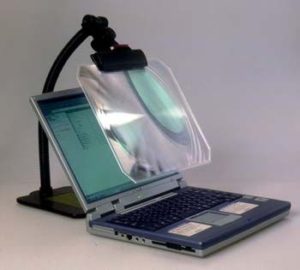Accommodating Employees with (Invisible) Disabilities
61 million people in the US—one in four—have a disability. Beyond stereotypes, “disability” can include conditions that can’t be observed directly. Consider these examples:
- A staff member with depression is struggling to mobilize in the mornings and get to work by 8:00.
- A postdoc with chronic pain wishes they could sit in the lab rather than standing most of the day.
- An employee going through chemo needs specific times off work for appointments, and fights severe nausea at times when at work.
- The fluorescent lights in your space trigger migraines for a student trainee.

Medications can have disabling effects like drowsiness or foggy thinking, which may not be immediately obvious.
At some point in your career, one of your staff or trainees will come to you requesting accommodations to do their job. Many of us are concerned that we won’t know how to handle it when someone comes to us needing help or that making accommodations might be expensive or difficult. The rules and requirements of the Americans with Disabilities Act are actually straightforward, and provide a clear path to getting your employee what he or she needs.
The ADA mandates that employers engage in an interactive process with employees with known disabilities in order to provide reasonable accommodations. Important Note: This does not mean you are required to hire or retain certain people simply because they are disabled. Employees must be able to perform the essential functions of their job.1
Here’s how to recognize when someone needs help and how to work through an interactive process.
Recognizing an Accommodation Request
An accommodation request can come in several forms, none of which require the individual to say the words “disability” or “accommodation.” The staff member can:
- Have obvious limitations, such as requiring a wheelchair or crutches.
- Show a change in performance (tardiness, not finishing work assigned, not performing tasks as well as previously).
- Request an accommodation, with or without using those words. They can request to avoid a repeated wrist motion when performing a task, mention having trouble with their memory or concentration due to a new medication (without then asking for accommodation), or show you a doctor’s note stating they shouldn’t lift more than 20 pounds.

Accommodation option: Employees with difficulty concentrating in an open office or lab environment may need to wear headphones to do their best work.
Any of these should cause you to start a conversation and determine the sort of restrictions or limitations the individual has, whether these limitations impede essential job functions, and how you/your institution can even the playing field with accommodations so the employee has the same opportunity to be successful at their job as an employee without a disability.
Keep the conversation to the whats and whens: What can/can’t the person do, what do they need, and what is the duration of the restrictions or limitations? Don’t ask for details you don’t need to help them, such as what disease or condition caused their impairment, what treatment they are receiving, or if they’re taking their medications. If the individual volunteers information or asks for advice, it’s okay to engage them, but don’t go there without an invitation.
Making Reasonable Accommodations
When working out reasonable accommodations, consider:
- Is the problem activity essential to that job? Could it be given to another employee and another task substituted?
- For example, your research assistant normally spends the day at a desk analyzing data, but four times a year you ask her to walk around a local event for three hours handing out flyers about your study. She says back pain prevents her from standing and walking for that long. Since the activity is so infrequent, can it be given to another member of your team while the employee needing accommodation takes something off that team member’s plate or has a different role?
- If the activity is essential to the job, can it be done in a different way? For example:
- Can the activity usually done standing be done sitting?
- Could the time be shifted? (I.e., an employee can no longer drive and needs to access public transportation at a set schedule; a sleep disorder prevents working an early shift but would allow later start and end times.)
- Would an assistive device allow the employee to do the activity? (The Job Accommodation Network has a dizzying list of assistive devices, including vendors and model numbers, broken down by type of limitation and disability.)
- Are there multiple possible accommodations? If so, consider the employee’s preference, but the decision of which to use is ultimately the employer’s.

Accommodation option: Screen magnifiers may be useful assistive devices for people with low vision.
In a survey of 781 employers who made accommodations for disabled employees, the Job Accommodation Network found that 59% paid nothing for the accommodation, and of those who did have to spend, the median cost for the accommodation was $500.
Once you and your employee have settled on an accommodation, discuss when and how you will check in to make sure everything’s working as expected. Keep iterating as needed to ensure success.
People with a disability may not see it as a disability or may not feel comfortable coming forward to request an accommodation. If you see someone struggling—especially someone you mentor or manage—ask if they need help, or if something about the work environment could be changed to make it easier for them. Let them lead the ensuing discussion, but make clear that you are available to talk about accommodations if necessary.
1 “An individual with a disability must…be qualified to perform the essential functions of the job with or without reasonable accommodation, in order to be protected by the ADA. This means that the applicant or employee must:
- satisfy your job requirements for educational background, employment experience, skills, licenses, and any other qualification standards that are job related; and
- be able to perform those tasks that are essential to the job, with or without reasonable accommodation.” Equal Opportunity Employment Commission.






1 Comment
Here’s a timely NYT article from the other side: How to Disclose a Disability to Your Employer (and Whether You Should): https://www.nytimes.com/2019/07/10/smarter-living/disclose-disability-work-employer-rights.html